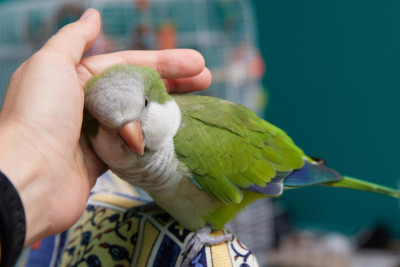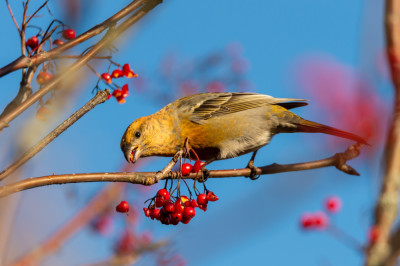1. Types of Bird Vocalizations
Birds use a wide range of vocalizations to communicate, and these can be broadly categorized into the following types:
-
Songs: Songs are typically associated with breeding and territory defense. Male birds often sing to attract mates and establish their presence in a particular area. These songs are often complex and melodic.
-
Calls: Calls are shorter and less complex vocalizations used for various purposes, including warning of predators, maintaining contact with flock members, and signaling distress.
-
Chirps and Chatter: Chirps and chatter are often used in social interactions, such as courtship and bonding. These vocalizations are typically less structured than songs and can be more playful.
-
Mimicry: Some bird species, like parrots and mockingbirds, are exceptional mimics. They can imitate a wide range of sounds, including human speech, other bird species' calls, and even environmental noises.
2. The Purpose of Bird Vocalizations
Birds use vocalizations to convey a multitude of information and intentions:
-
Mate Attraction: Male birds often sing to attract females. The complexity and quality of a song can indicate the health and genetic fitness of the singer.
-
Territorial Defense: Many bird species use songs to establish and defend territories. The presence of a singing bird can deter intruders and signal to other birds that the territory is occupied.
-
Communication within Flocks: Flock-living birds use calls to maintain contact with one another while foraging or flying. These calls help coordinate movement and alert others to potential threats.
-
Parent-Offspring Communication: Nestling birds communicate with their parents through calls to indicate their needs, such as hunger or discomfort.
-
Predator Alerts: Birds often have distinct alarm calls to warn others in the flock of the presence of predators. These calls can vary depending on the type and level of threat.
3. Recognizing Bird Emotions
Bird vocalizations can provide clues about a bird's emotional state:
-
Happy and Content: Birds that are content and comfortable in their environment may sing or chirp softly. Playful chatter is also a sign of a happy bird.
-
Stressed or Uncomfortable: Birds that feel stressed, threatened, or uncomfortable may exhibit agitated vocalizations, rapid calls, or repetitive squawking.
-
In Pain or Distress: In cases of injury or illness, birds may produce distress calls or sounds of pain. These vocalizations are often loud and urgent.
4. Interacting with Your Pet Bird
If you have a pet bird, it's essential to learn their specific vocalizations and what they mean. Building a bond with your bird involves recognizing their unique sounds and responding accordingly:
-
Positive Reinforcement: Reward your bird with treats, attention, or praise when they vocalize positively, such as singing or mimicry.
-
Comforting and Calming: If your bird exhibits signs of stress or discomfort, speak soothingly to them to provide reassurance and comfort.
-
Provide Stimulation: Birds are intelligent and require mental stimulation. Engage with toys, games, and activities that encourage vocalization and play.
Conclusion
Bird vocalizations are a window into the rich and intricate world of avian communication. By understanding the types and purposes of bird vocalizations, you can better interpret your pet bird's needs and emotions. Listening to the sounds of birds in the wild can also enhance your appreciation for these remarkable creatures and the role their vocalizations play in their lives.







